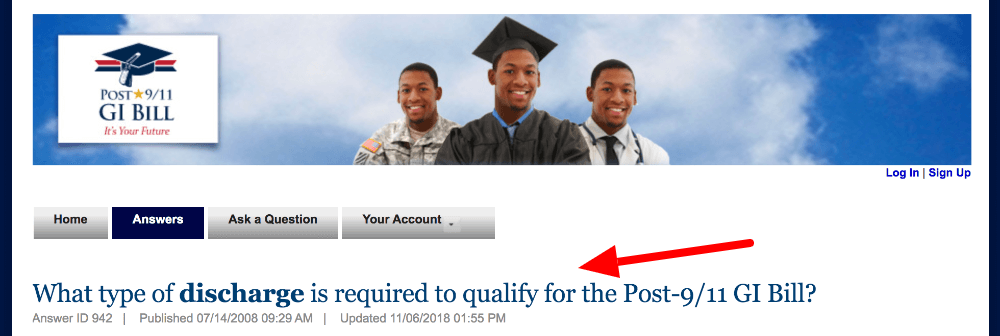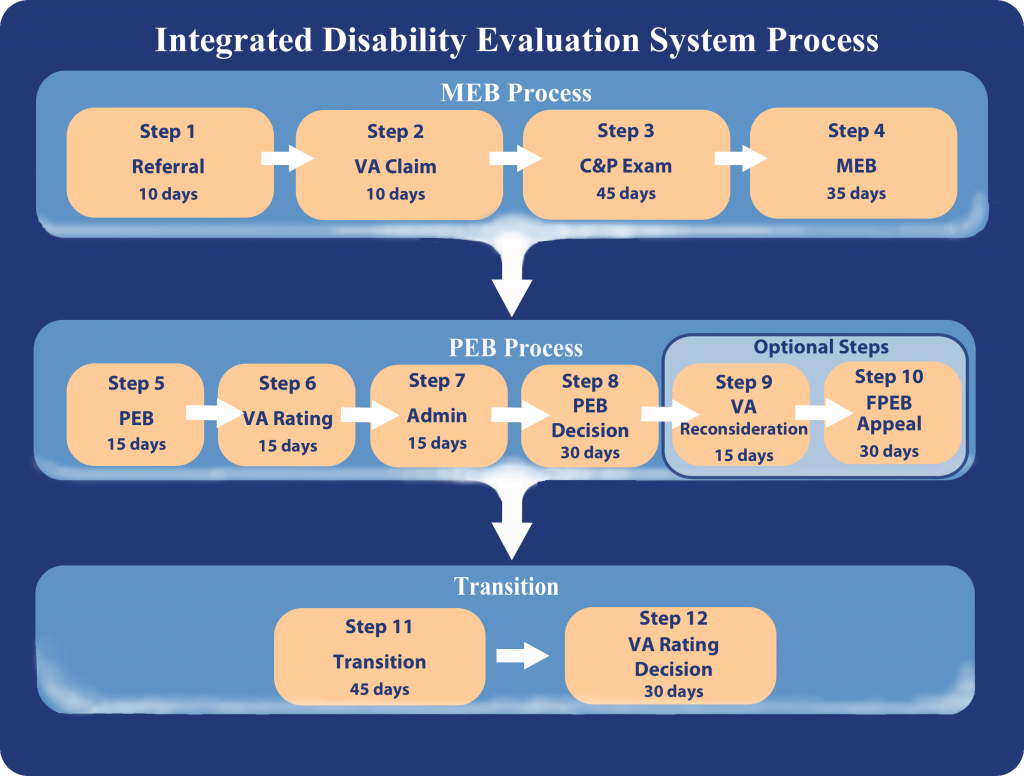You are probably reading this because, like me, you are trying to figure out the next steps after your military career came to a closure sooner than you expected. It can be very upsetting. I get it. My 12 year flying career as a fighter pilot ended in one flight due to a neck injury. You had the band of brothers (or sisters), training, goals, consistent income, and now that is all gone, you are wondering what can I do next?
Whether you have a family to support, just trying to pay the bills, want to learn a new hobby, we will dive into can you still use your GI bill to get from where you are to where you want to be.
If you were medically discharged from the military, you do indeed qualify for the GI Bill. Your qualification allows you to pursue further education courses or degrees to certifications in a potential hobby. Your spouse or child may have these benefits as well.
To learn more about how being medically discharged from the military can impact you and your GI Bill, continue reading this article.

How Do I Qualify For The GI Bill When Medically Discharged?
Here's what I found on the VA website.

To remain eligible for the GI bill when discharged early, you must meet one of these:
- Honorable discharge
- A medical condition that preexisted service and is not service-connected
- A hardship
- A physical or mental condition not characterized as a disability and did not result from willful misconduct but did interfere with the performance of duty.
What Is a Medical Discharge?
A Medical Discharge may be given to service members who become injured or ill where military duty is no longer possible based on a medical evaluation of the condition. Military members who receive Medical Discharge should be applying for VA compensation for service-connected issues, especially those issues that resulted in the discharge.
What Is an Honorable Discharge?
An honorable discharge is the highest discharge that a military member can receive. This discharge indicates the service member performed duties well, faithfully executed the mission, and was an asset to the branch of the military where the member served.
Are You Considered a Veteran If Medically Discharged?
According to federal law, a veteran is defined as any person who served honorably on active duty in the armed forces of the United States.
A discharge marked “general and under honorable conditions” qualifies as well.
Additionally, events that qualify are events where a person who served in the active military, naval or air service of the United States and was discharged from the service due to a service-connected disability or filed a claim and was service-connected for a disability sustained while in the service.
You can check out this post to learn all the details about when you're considered a veteran.
For example:
A person could go into the military and injure themselves while in basic training. That person may receive a service-connected disability rating from the VA. The person would be considered a veteran no matter how long they served.
How Long Does The Med Board Process Take?
This question, like many questions regarding military processes, is “it depends”...
I will walk you through the process at a high level so you know what to expect.
Also, like many military processes, it is quite complex. We are going to try to simplify the steps for you.
So the answer to your question: It could be 250 days to get through the entire process to get the VA rating.
When a military member develops a medical condition that no longer allows him to perform his assigned duties, he is referred to IDES- yes another acronym- Integrated Disability Evaluation System. IDES was created to bridge the gap between the DoD Disability Process and the VA Disability Process. The goal of IDES is to simplify the entire Military Disability process by having the DoD and the VA work together and share information. People who use IDES are those who are no longer ability to perform their military duties, so they qualify for DoD Disability. Here's the catch though, veterans who do not qualify for DoD Disability may still receive VA Disability. Those people go through VA Disability process, but not as part of the IDES.
Keep reading below to find out the basics of how IDES works!

Chart Credit: Militarydisabilitymadeeasy.com
STEP 1:
Once a physician believes that the military member will not return to state to be able to perform the job within one year, the member is referred to the MEB (Medical Evaluation Board), and is assigned a PEBLO (Physical Evaluation Board Liaison Officer), and an MSC (VA Military Services Coordinator). All of these people will assist the member through IDES.
STEP 2:
After the referral to MEB (Medical Evaluation Board) is completed, the MSC (VA Military Services Coordinator) assists in submitting the VA Disability Claim.
STEP 3:
C&P Exam (Compensation and Pension Exam). After the VA Disability Claim has been submitted, the military member has the C&P Exam completed. The C&P exam is an exam completed by a general physician, but there may be a referral to a specialist physician.
STEP 4:
MEB (Medical Evaluation Board). After the results from the C&P (Compensation and Pension Exam) are returned to the PEBLO (Physical Evaluation Board Liaison Officer) The physician then writes up a report, called the Narrative Summary. This summary includes all medical conditions of the military member from the beginning through the C&P Exam. The summary is then submitted to the MEB (Medical Evaluation Board), and the MEB determines the acceptability of each condition. MEB forwards its decision to the PEB, and now the MEB process is complete.
STEP 5:
PEB (Physical Evaluation Board). The PEB receives the MEB (Medical Evaluation Board) decision, which starts the official PEB process. The PEB determines what conditions qualify the military member for DoD Disability. Conditions must meet 2 criteria: 1) Service Connected 2) Unfit for Duty.
STEP 6:
VA Rating. Once the PEB (Physical Evaluation Board) determines what conditions meet the aforementioned criteria, they send their decision to the VA. For a case to continue, there must be at least one condition. If none of the conditions are deemed to qualify for DoD Disability, the military members returns to duty and the IDES (Integrated Disability Evaluation System) process ends. If the case is sent to the VA, a Military Disability Rating is assigned to every service- connected condition that the military member has. The VA has the official authority to rate for both VA Disability and DoD Disability.
STEP 7:
Admin. This is not technically a step in the evaluation process. It is just that 15 days are factored into the timeline for any administration activities.
STEP 8:
PEB Decision. Once the VA makes their rating decision, it then goes back to the PEB (Physical Evaluation Board). Then the PEB uses the VA’s ratings as the official rating for DoD Disability for the military members conditions that make them unfit for duty.
STEP 9:
VA Reconsideration. If the military member does not agree with the VA’s rating decision, he or she can appeal for a reconsideration to re-examine the case. The VA will look at the case again, and then make a final rating decision.
STEP 10:
FPEB Appeal. If the military member does not agree with what the PEB says is unfit for duty conditions, the military member can appeal to have the Formal Physical Evaluation Board (FPEB) review the case again. FPEB makes the final decision on unfit for duty conditions, and the PEB process ends.
STEP 11:
Transition. After all decisions are final, the PEB puts the military member on Temporary Disability Retired List or separates the military member from service.
STEP 12:
VA Rating Decision. 30 days after the military member separates from the military, the VA will publish its rating decision and the IDEAS process ends.
If you are still with us, let’s learn what that GI bill that you earned can pay for!
What Can The GI Bill Pay For?
The Post 9/11 GI bill provides benefits for members who have served on active duty for 90 days or more since September 10th, 2001. Your tuition & fees at a school, monthly housing allowance and money towards books and supplies can all be covered. Your spouse and children can even be eligible for the aforementioned benefits.
To Recap, Yes, You Get Your VA Benefits, Even If Medically Discharged
Yes, if you are medically discharged you can still use your GI bill!
Milversity is a resource created by a military member for military members to show you all the options you have with the GI bill.
I could write a 200,000 word post on all the options, and nobody has time for that. So go check out our other articles to learn the myriad of ways you can jumpstart your career with the GI Bill.

